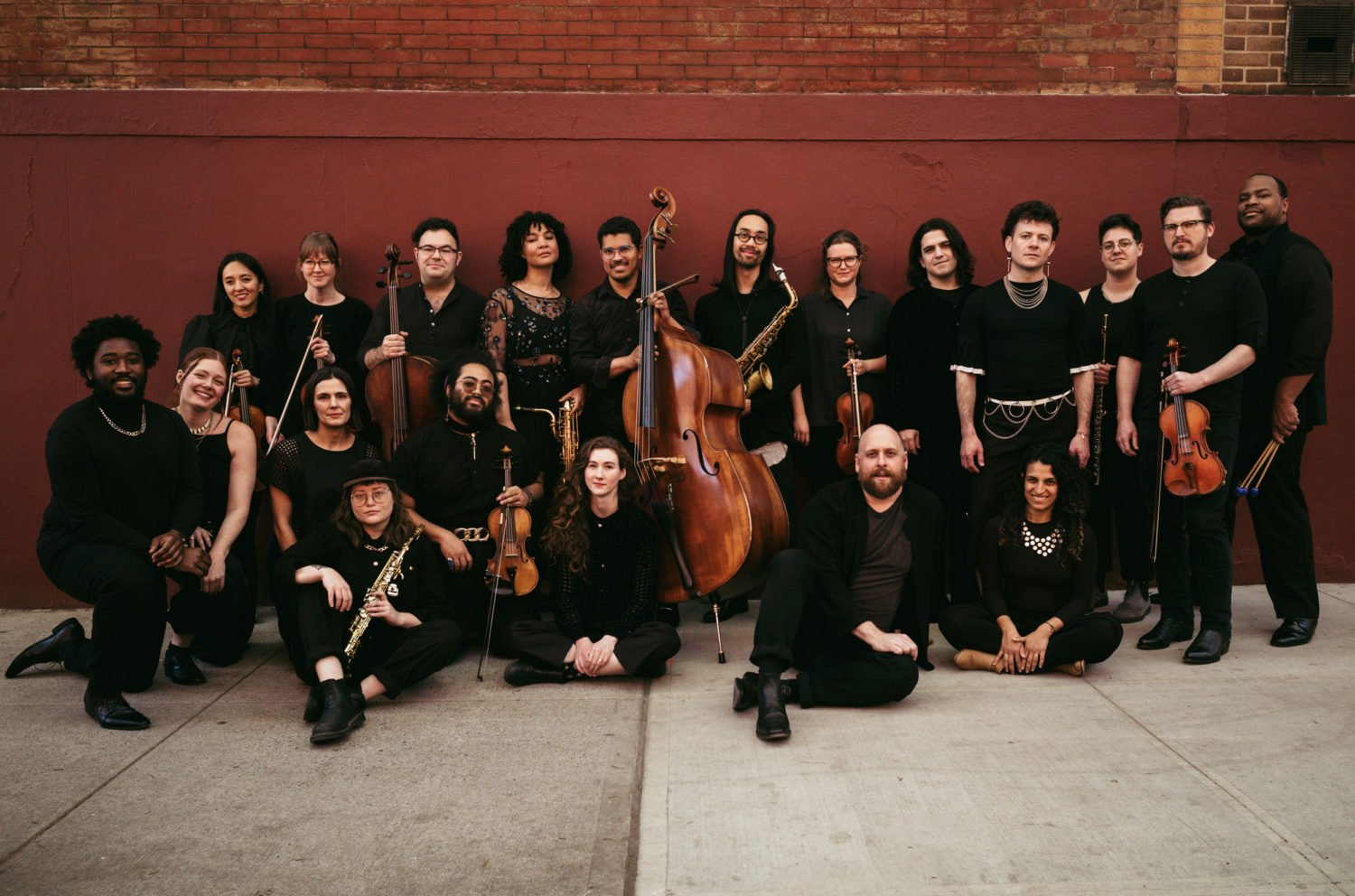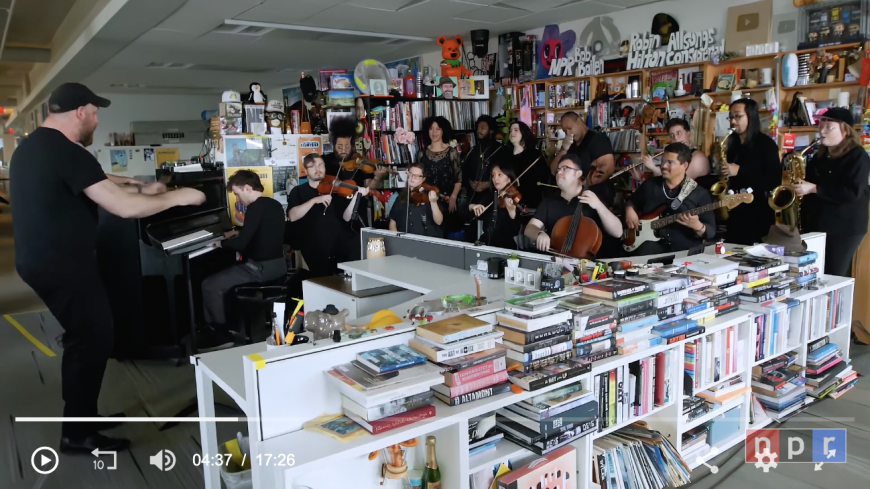
The name Wild Up, one of L.A.’s most visible and engaging new-music groups, almost seems to summon the spirit of Julius Eastman. The once hip-then forgotten composer has had a renaissance, decades after his death, slowed only by the loss of so many of his scores in the tragic circumstances of his death, in 1990. (As is well-known, composer Mary Jane Leach, one of his colleagues, discovered and rescued many of the scores on which contemporary appreciation of Eastman depends.)
These days, the composer has few more active advocates than Wild Up and its energetic and communicative artistic director, Christopher Rountree. He’s bringing the group to Stanford Lively Arts next February for a two-day Eastman extravaganza, and if you want a taste of what that might be like, you can find it in a recent NPR Tiny Desk concert.
On June 25, 14 Wild Up instrumentalists, including Richard Valitutto on an upright piano and Sidney Hopson behind a vibraphone squashed themselves into the fabled corner of the National Public Radio Washington offices, where have stood many icons of pop celebrity and multicultural cool — recently Bono and the Edge, Babyface, Lewis Capaldi, and Karol G have played there — and swung into Eastman’s most beloved classic, Stay On It (1973).

Wild Up first played this work in 2014 and is not that different in makeup than the S.E.M. Ensemble that Eastman was part of and that premiered Stay On It. The group boasts a number of bonafide classical stars — cellist Seth Parker Woods, guitarist Jiji, composer/ saxophonist Shelley Washington — but even the not famous members are all stars. They’re down for a challenge.
“Eastman’s pieces have been teachers for us,” says Rountree in his introduction to the piece. “They’re the kind of pieces you breathe in as a musician, and then they do their work on you and they change you. And when you breathe them out again, you’re breathing not only the piece but also a different version of yourself.”
This is an expert rendition of Stay On It, so know that the organized chaos of the climax, with musicians yowling like cats, among other things, could be a lot less expressive than it is here. You have to love the vigor, though, with which the ensemble approaches these moments — they’re not trying to tame the beast, or even entertain. It’s more like they’re sharing secrets of the universe that they’ve discovered through a cryptographic project and much philosophical discussion of what it all means. The serenity of the piece’s close is an arrival point, like zen.
And yes, it is totally engrossing and entertaining. If there’s a lesson in the Eastman revival, it has to be that our own musical experience is similar to his — many fractions of contemporary styles and voices coming together to make a whole. This form of minimalism, that has groove and Fluxus elements and jazz vocalizing and some carefully crafted layering of parts, just appeals to us because it sounds like it belongs in our sound world, even though some of it is crazy. That sound revolution of the 1960s and early 70s is still pushing on us, today.




